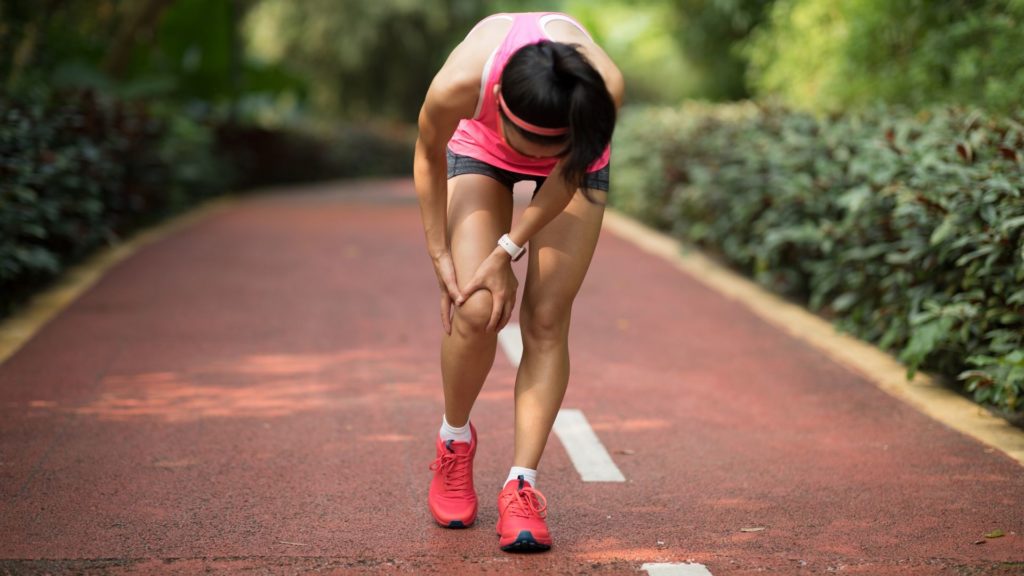What Are Shin Splints?
The term “shin splint” is a common misnomer in sports medicine. It does not imply a diagnosis, but rather a the symptom of pain over the front of the tibia (shinbone.) “Shin splints” is simply the name given to pain felt over the front of the shin while walking or running. The pain can be due to either problems of the muscles, the shinbone, or the attachment of the muscle to the bone. In order to heal shin splints, steps must be taken to heal these affected areas.
What Causes Shin Splints?
The pain is likely due to a stress fracture or microscopic fracture along the surface of the shinbone. The problem is most commonly due to overuse, and is often seen when the intensity or duration of activity is suddenly increased. The injury commonly sidelines runners who increase their mileage from a steady baseline to a much higher level with little graduation. The bones and muscles in our bodies adapt and perform in response to our physical needs, but this is a gradual process. A sudden increase in exertion or stress can cause damage to an unprepared bone or muscle.
Why Are Some People More Susceptible?
Everyone has a different body, and each person’s body mechanics differ slightly. One factor commonly implicated in causing shin splints is pronation. Pronation occurs when the foot flattens out when weight is applied. A normal foot should flatten slightly, but pronation occurs when the foot becomes too flattened out causing the foot to roll inwards. This can cause increased demand on the muscle over the front of the shin and lead to complaints of shin pain. An orthopedic professional can fit you with shoe inserts that may help alleviate the pronation.
How Are Shin Splints Diagnosed?
As stated, shin splints are not a diagnosis. Shin splints are caused be some other problem that can be diagnosed, such as a bone fracture. In order to determine the underlying cause of the pain, your physician may order an x-ray or bone scan. The x-ray can detect fractures, and occasionally detect long-standing stress fractures. The bone scan will detect areas of high bone turnover; these ‘hot’ areas indicate possible stress fractures or other bone problems.
Treatments to Solve Solve Shin Splints
Shin splints are due to an injury. Rest (non-use) is always beneficial.
Apply Cold Packs
Apply ice packs or perform an ice massage for up to 20 minutes, three times a day. To perform an ice massage, freeze water in a paper cup. Peel back the top of the paper cup to expose the ice and rub around the painful area. Do not apply ice more than 20 minutes or else you will be doing more harm than good!
Low Impact Exercises
Perform rehabilitation exercises (low-impact) regularly. Swimming and cycling are excellent activities for an individual with shin splints. Variety in exercise not only improves overall fitness and strength, it provides individual muscle groups with a needed rest. Try to avoid excessive impact while recovering. The injury must be allowed to heal gradually and light, gradual exercise will benefit the healing process.
Anti-Inflammatory Medication
Take an anti-inflammatory medication prescribed by your doctor. Over the counter drugs like Tylenol contain ibuprofen – an anti-inflammatory also. This may also ease the pain.
Consult a Specialist
If you have a foot that excessively pronates, seek consultation with an orthopedic specialist to have custom made orthotics (shoe inserts.)
How Can I Prevent Shin Splints?
Train smart. If your sport involves high impact activities, make sure you have days that are low-impact (e.g. cycling or swimming) with little or no running, especially on hard surfaces. Increase the intensity and duration of exercise gradually to build stability and consistent strength throughout the muscle and bone. When you are increasing your activity, perform more low-impact exercise in the beginning (i.e. warm up well.) Make sure you have proper footwear that has been replaced regularly (life span of most running shoes is about 500 miles or 6 months.)

